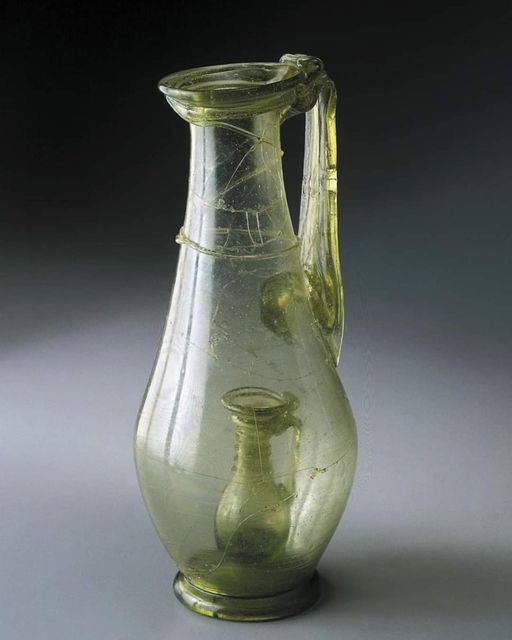
In the realm of ancient artifacts, few are as captivating as the Roman glass “joke jar,” a remarkable piece from the 4th century AD that continues to mystify and intrigue. Crafted with meticulous skill and ingenuity, this glass beaker with a smaller beaker nested inside was not only a testament to the craftsmanship of Roman glassmakers but also a whimsical creation designed to amuse and delight. Discovered in a grave in Switzerland, this artifact offers a glimpse into the artistry and innovation of the ancient world, inviting us to delve deeper into its fascinating history.
Unraveling the Origins and Purpose of the Roman Glass “Joke Jar”
The Roman glass “joke jar” is believed to have been crafted in Cologne, Germany, a city with a rich history dating back to the 1st century AD when it was established as Colonia Agrippina by the Romans. Known for its vibrant trade and cultural exchange, Cologne was a hub of craftsmanship and innovation, making it a likely birthplace for such a unique artifact. The nested design of the glass beakers, with one fitting snugly inside the other, showcases the skill and precision of Roman glassmakers, who were renowned for their mastery of the craft.
While the exact purpose of the Roman glass “joke jar” remains a subject of speculation, some scholars suggest that it may have been created as a novelty item or a playful demonstration of the glassmaker’s expertise. The smaller beaker nested within the larger one could have been intended to surprise and amuse observers, showcasing the glassmaker’s ability to manipulate and shape glass in intricate ways. Alternatively, it may have served a more practical function, such as a container for storing precious liquids or substances.
The discovery of the Roman glass “joke jar” in a grave in Switzerland adds an intriguing layer to its story, hinting at its significance in funerary or ritual contexts. In ancient Roman culture, grave goods were often included in burials to accompany the deceased into the afterlife or to signify their status and wealth in society. The presence of such a unique and finely crafted artifact in a burial site suggests that it held symbolic or ritualistic significance, perhaps serving as a cherished possession or a symbol of prestige for the individual interred.
Reflecting on the Legacy of the Roman Glass “Joke Jar”
As we contemplate the enigmatic beauty of the Roman glass “joke jar,” we are reminded of the ingenuity and creativity of the ancient Romans, who left behind a legacy of innovation and artistic achievement. This whimsical yet masterfully crafted artifact serves as a testament to the skill and craftsmanship of Roman glassmakers and offers a tantalizing glimpse into the culture and society of the ancient world. Though its exact purpose may remain a mystery, the Roman glass “joke jar” continues to captivate and inspire, inviting us to marvel at the wonders of the past.
Unearthing Insights Through Archaeology
The discovery of the Roman glass “joke jar” underscores the importance of archaeology in uncovering the secrets of ancient civilizations. Through careful excavation and analysis, archaeologists gain valuable insights into the lives, beliefs, and customs of our ancestors, piecing together the puzzle of human history one artifact at a time. By preserving and studying artifacts like the Roman glass “joke jar,” we not only enrich our understanding of the past but also gain a deeper appreciation for the ingenuity and creativity of ancient cultures.


